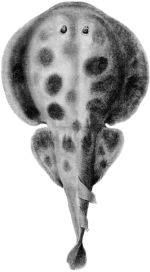
Copyright: Lucy Lyons, 2008
Delineating Disease: Drawings by Lucy Lyons
16th September–23rd December 2008
Over the past three years artist Lucy Lyons has studied the skeletons of patients who suffered from a rare disease called Fibrodysplasia Ossificans Progressiva (FOP), in which muscle turns to bone.
As well as making drawings of the skeletons of deceased patients, Lucy has interviewed patients living with the condition, and has worked closely with medical researchers studying the cause of the disease. Her work reveals the power of drawing to delineate the hidden structures of disease.
The exhibition contains Lucy’s drawings, together with photographs and other supporting information, including quotes from patients living with the disease. The exhibition also includes the skeleton showing the effects of FOP from the collection of the 18th-century surgeon John Hunter.
For more information about FOP visit this website.
For five years the artist Lucy Lyons has researched the phenomena of disease through drawing. Since 2005 she has focused specifically on Fibrodysplasia Ossificans Progressiva or FOP. This very rare condition turns connective tissue into bone. A secondary skeleton grows, locking parts of the body, confining the sufferer and rendering them immobile within a bony prison. Working alongside Martyn Cooke, Head of the Conservation Unit at The Royal College of Surgeons of England, Lucy was given permission to study the remains of two patients and the effects this dramatic illness had on their bodies.
Inspired by the work of the 19th-century pathologist Sir Robert Carswell, Lucy developed a method of drawing based on his depictions or ‘delineations’ of pathological structures. Expanding on this, Lucy defines her interpretation of delineation as a system that involves making observational drawings that are lifelike and portray the encounters as accurately as possible. Importantly they are produced in situ in the presence of the object, and are not completed, amended or embellished at a later stage.
Patients have participated in Lucy’s project. Their personal perspectives have been documented, adding further valuable information about the disease. Lucy has also studied historical specimens showing the condition, including the skeleton of 'Mr Jeffs' from the Hunterian Collection, and two other skeletons at the Naturhistorisches Museum, Basel.
Lucy has not treated her encounters with FOP as snap shots, but as visual experiences developed over time and interpreted through the act of drawing. Each time we look, we see anew: by applying intense scrutiny, and by drawing as immediately and directly as possible, new dialogues develop between subject and artist, and subsequently between drawing and viewer. By ‘drawing her way in’, Lucy aims to both acquire understanding of this rare and shocking condition and in turn generate further knowledge about FOP through the activity of delineating this disease.


